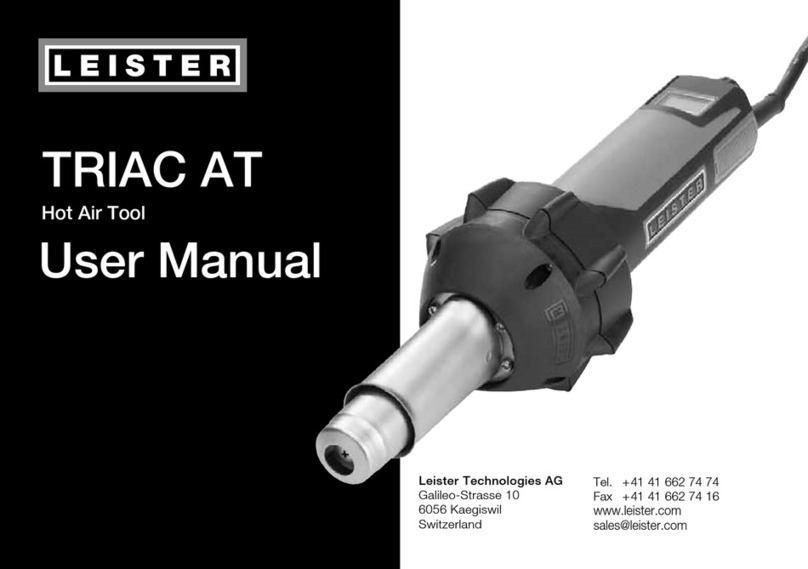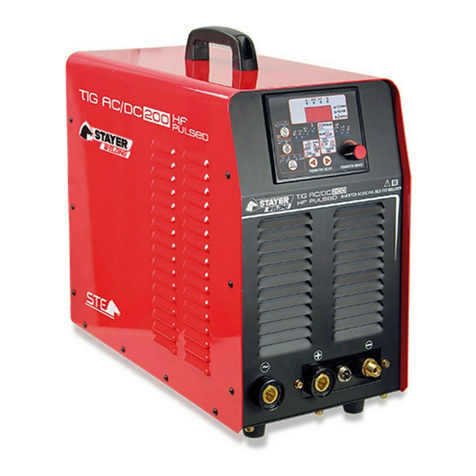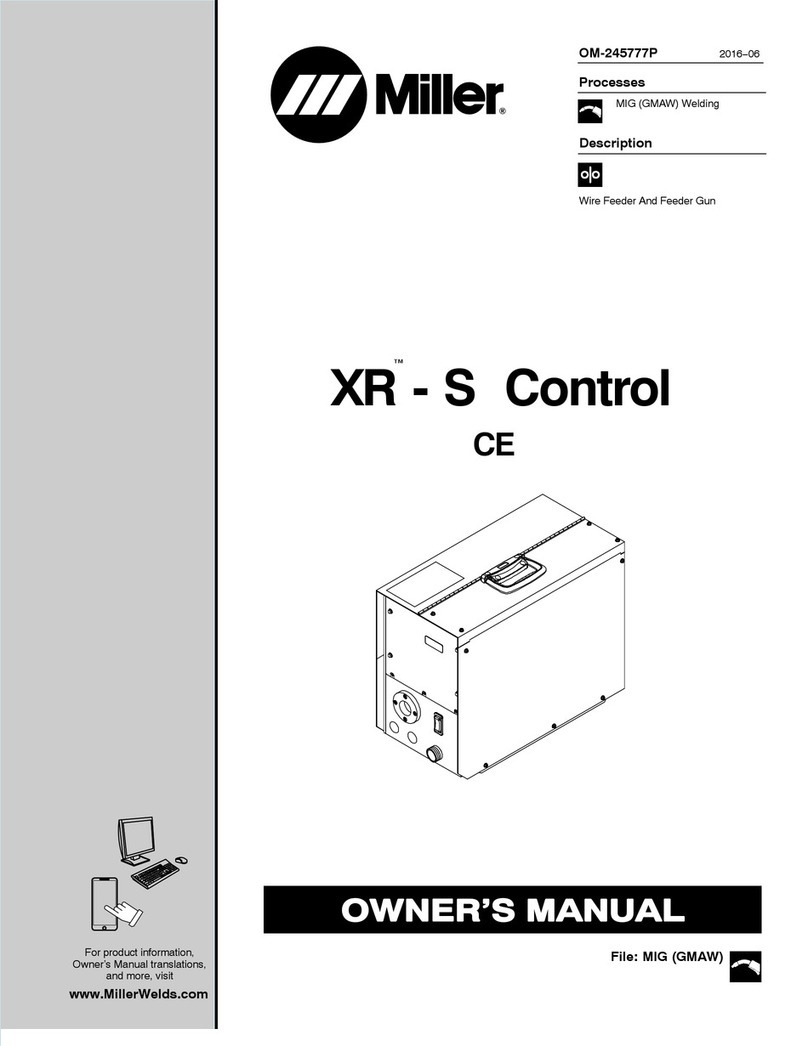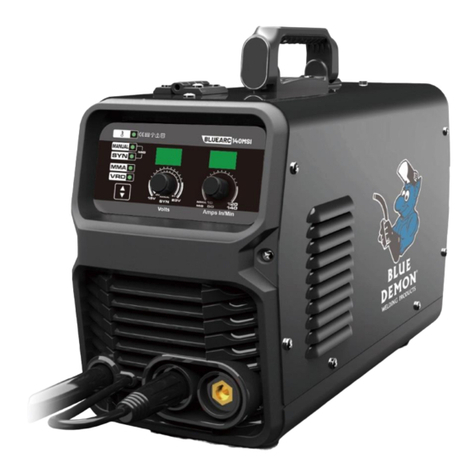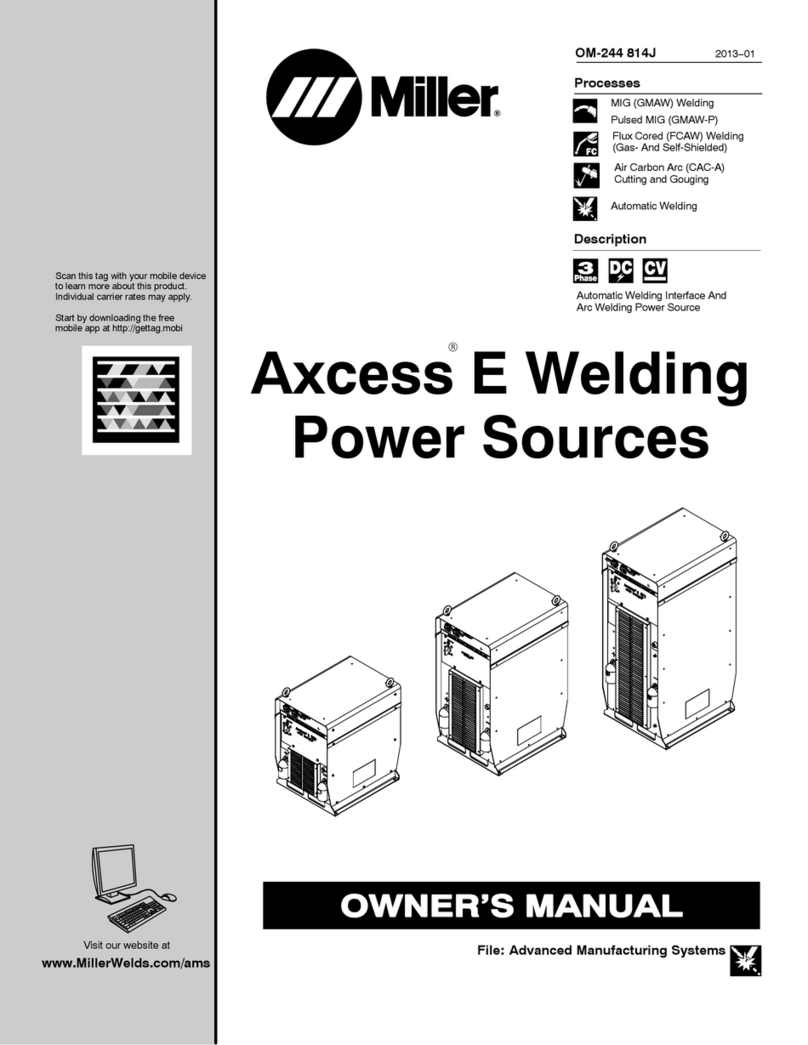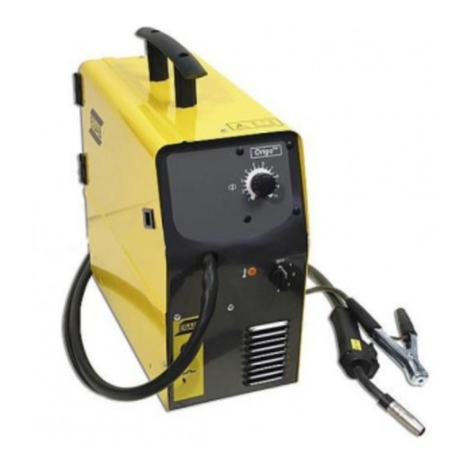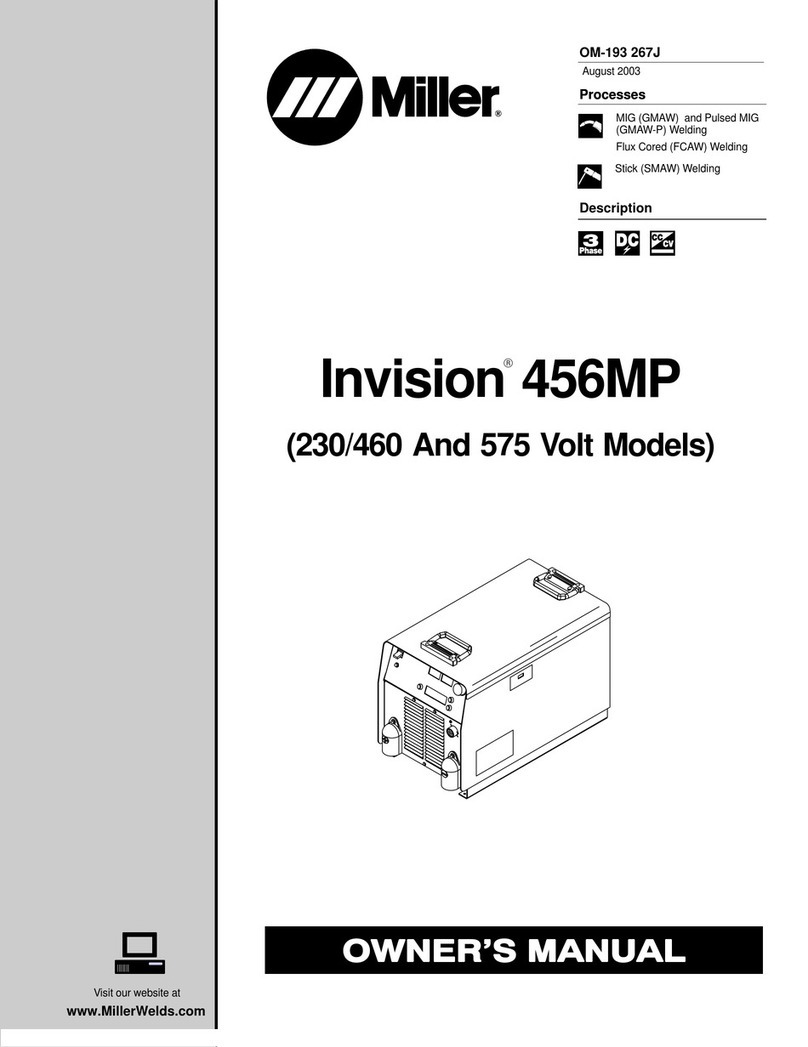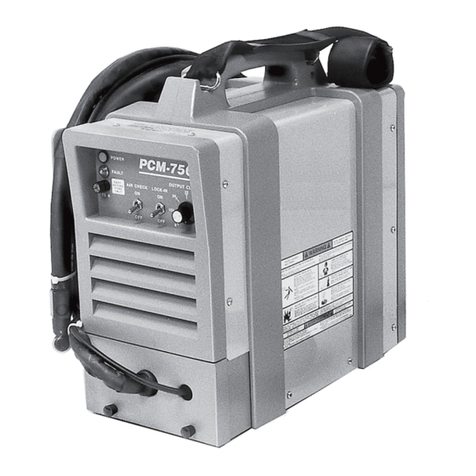ERICO Eritech Cadweld User manual

Exothermic
Welding
Manual
CADWELD®

WARNING
1. ERICO products shall be installed and used only as indicated in ERICO product instruction sheets and
training materials. Instruction sheets are available at www.erico.com and from your ERICO customer
service representative.
2. ERICO products must never be used for a purpose other than the purpose for which they were designed
or in a manner that exceeds specified load ratings.
3. All instructions must be completely followed to ensure proper and safe installation and performance.
4. Improper installation, misuse, misapplication or other failure to completely follow ERICO’s instructions
and warnings may cause product malfunction, property damage, serious bodily injury and death.
GENERAL AND SAFETY INSTRUCTIONS:
A. Only ERICO manufactured equipment and materials should be used to make CADWELD
®
connections.
B. Do not connect items except as detailed in instruction sheets. Failure to comply with these instructions
may result in improper and unsafe connections, damage to items being connected, bodily injury and
property damage.
C. Do not use worn or broken equipment which could cause leakage.
D. Do not alter equipment or material without ERICO authorization.
E. When using CADWELD
®
do not use welding material package if damaged or not fully intact.
When using CADWELD
®
PLUS, do not tamper with or disassemble the welding material unit.
F. Make connections in conformance with CADWELD instructions and all governing codes.
1. Personnel should be properly trained in the use of this product and must wear safety glasses
and gloves.
2. Avoid contact with hot materials.
3. Advise nearby personnel of welding operations in the area.
4. Remove or protect fire hazards in the immediate area.
5. Provide adequate ventilation to the work area.
6. Do not smoke when handling starting material.
7. Avoid direct eye contact with “flash” of light from ignition of starting material.
G.Welding material is an exothermic mixture and reacts to produce hot molten material with temperatures
in excess of 1400°C (2500°F) and a localized release of smoke. These materials are not explosive.
Ignition temperatures are in excess of 900°C (1650°F) for welding material.
H. Adhering to the CADWELD welding procedures will minimize risk of burns and fire caused by hot molten
material spillage. In case of fire, use of water or CO
2
will aid in control of burning containers. Large
quantities of water will aid in controlling a fire should the exothermic materials become involved.
Water should be applied from a distance.
1. Make sure there is proper mold fit and assembly of equipment.
2. Avoid moisture and contaminants in mold and materials being welded. Contact between hot molten
metal and moisture or contaminants may result in spewing of hot material.
3. Base material thickness must be sufficient for the size and type of connection being made to prevent
melt-through and leakage of hot molten metal.
I. Applications or conditions may exist which require special considerations. The following are examples,
but are not intended to be a complete listing of applications/conditions.
CONNECTIONS TO PIPE/VESSELS
For use with cast iron pipe or heavy casting meeting ASTM A47-84, A48-83, A126-84, A278-85, or
A377-89. DO NOT USE ON CAST IRON SOIL PIPE (ASTM A74-93). Evaluate possible effects of CADWELD
connections to structural members and thin-wall materials; vessels/piping systems that are pressurized,
closed or containing (or having contained) flammable/explosive/hazardous materials. Evaluation should
be made prior to use, based on conditions of use and applicable codes, and should incorporate as a
minimum, effects of melt-through of hot material; structural/metallurgical effects of CADWELD
connections, pressure (temperature) build-up and fire/chemical decomposition hazards.
CONNECTIONS TO REBAR
Application of the CADWELD connection may have an effect on the rebar’s structural integrity.
The rebar’s chemistry and the location of the weld should be considered before making any welds
to the rebar. For lapped rebar splices, it is recommended that the connections be made near the
bar end at an area of minimum stress. If CADWELD Rebar Splices are used, the grounding
connection can be made to the splice sleeve with minimal effect on the structural characteristics
of the splice.
SAFETY INSTRUCTIONS:
All governing codes and regulations and those required by the job site must be observed. Always use
appropriate safety equipment such as eye protection, hard hat, and gloves as appropriate to the application.
WARRANTY
ERICO products are warranted to be free from defects in material and workmanship at the time of
shipment. NO OTHER WARRANTY, WHETHER EXPRESS OR IMPLIED (INCLUDING ANY WARRANTY OF
MERCHANTABILITY OR FITNESS FOR A PARTICULAR PURPOSE), SHALL EXIST IN CONNECTION WITH THE
SALE OR USE OF ANY ERICO PRODUCTS. Claims for errors, shortages, defects or nonconformities
ascertainable upon inspection must be made in writing within 5 days after Buyer’s receipt of products.
All other claims must be made in writing to ERICO within 6 months from the date of shipment or
transport. Products claimed to be nonconforming or defective must, upon ERICO’s prior written
approval in accordance with its standard terms and procedures governing returns, promptly be returned
to ERICO for inspection. Claims not made as provided above and within the applicable time period will
be barred. ERICO shall in no event be responsible if the products have not been stored or used in
accordance with its specifications and recommended procedures. ERICO will, at its option, either repair
or replace nonconforming or defective products for which it is responsible or return the purchase price
to the Buyer. THE FOREGOING STATES BUYER’S EXCLUSIVE REMEDY FOR ANY BREACH OF ERICO
WARRANTY AND FOR ANY CLAIM, WHETHER SOUNDING IN CONTRACT, TORT OR NEGLIGENCE,
FOR LOSS OR INJURY CAUSED BY THE SALE OR USE OF ANY PRODUCT.
LIMITATION OF LIABILITY
ERICO excludes all liability except such liability that is directly attributable to the willful or gross negligence
of ERICO’s employees. Should ERICO be held liable its liability shall in no event exceed the total purchase
price under the contract. ERICO SHALL IN NO EVENT BE RESPONSIBLE FOR ANY LOSS OF BUSINESS OR
PROFITS, DOWNTIME OR DELAY, LABOR, REPAIR OR MATERIAL COSTS OR ANY SIMILAR OR DISSIMILAR
CONSEQUENTIAL LOSS OR DAMAGE INCURRED BY BUYER.

The CADWELD®process is a method of making
electrical connections of copper-to-copper or
copper-to-steel in which no outside source of
heat or power is required.
In this process, conductors are prepared, placed
in a purpose-designed graphite mold, and
exothermically welded to produce a permanent
electrical connection.
The steps outlined below are a general
demonstration of a typical welded connection.
These basic steps are used for all CADWELD
electrical connections. Be sure to read and follow
the instructions included with every mold before
making a connection.
The CADWELD exothermic process is a system.
Materials from other manufacturers should not
be mixed or matched with CADWELD molds or
welding material.
1
The CADWELD
®
Process
The CADWELD®Process .................................... 2
The CADWELD®PLUS Process ......................... 11
The CADWELD®EXOLON Process ................... 19
The CADWELD®ONE SHOT Process ................ 28
The CADWELD®PLUS ONE SHOT Process....... 33

Fig. 1
Always wear protective safety glasses and gloves
while working with CADWELD®exothermic welding
products.
Fig. 2
Gather the proper materials and equipment for
the type of connection you are making. The typical
CADWELD system requires a graphite mold, handle
clamp, welding material, natural bristle brush for
mold cleaning, wire brush for cleaning/preparing
conductors, flint igniter, and propane torch.
NOTE: Additional materials may be required
for your specific application. Refer to your
mold instructions. Advise nearby personnel of
welding operations in the area prior to ignition.
Fig. 3
Check to ensure the graphite mold is not worn or
broken, which could cause leakage of molten weld
metal during the reaction.
The CADWELD
®
Process
2

Fig. 4
Inspect the mold ID tag to ensure that it corresponds
to the application, indicated by the:
1. mold part number
2. conductor size
3. welding material required
4. other materials required
The mold must be correct for the conductor size and
application. DO NOT MODIFY MOLDS.
Fig. 5
Remove the small wire bracket which is used to
temporarily hold the mold together before using.
Set the bracket aside.
Fig. 6
Slide the handle clamp into the pre-drilled holes with
the proper orientation for the thumbscrews.
The CADWELD
®
Process
3

Fig. 7
Tighten the clamp thumbscrews onto the mold.
Fig. 8
Close the grips to tightly lock the mold. Check for
an appropriate seal on the mold.
Fig. 9
If the mold does not seal properly, make adjustments
to tighten/loosen the handle clamp.
4
The CADWELD
®
Process

Fig. 10
Graphite absorbs moisture. Ignite the propane torch
and dry out the inside of the mold thoroughly on
both sides, heating the mold to approximately 250
degrees Fahrenheit (120 degrees Celsius).
Fig. 11
The conductors should be clean and dry before the
connection is made. Use a propane torch to dry wire
conductors and remove remaining cleaning residue,
solvent, or water before making the CADWELD®
connection.
Fig. 12
Next, use a wire brush to further prepare the surface
of the conductors (CADWELD T-313 or T-314
brush). Scrape the outer surface to remove dirt and
oxidation. You will notice a slight color change.
5
The CADWELD
®
Process

Fig. 13
Insert the conductors and position them for the
connection.
Fig. 14
Close the clamp tightly once the conductors are
properly positioned.
Fig. 15
Steel disk found inside the packaging box of
welding material.
6
The CADWELD
®
Process

Fig. 16
Insert the steel disk (concave side up) into the mold.
Hold the steel disk on the side of the mold and let it
slide into place.
Fig. 17
Ensure that the steel disk is properly seated.
Fig. 18
Next, take a tube of properly sized welding material
(as identified on the mold ID tag) out of the box.
7
The CADWELD
®
Process

Fig. 19
Remove the lid over the mold crucible.
Fig. 20
Quickly pour the loose welding material powder
into the mold.
Fig. 21
The bottom of the tube contains compressed
material (starting material). Tap the bottom of the
tube a couple of times to loosen this material.
8
The CADWELD
®
Process

Fig. 22
Pour 1/4 to 1/3 of the starting material over the
welding material in the mold crucible.
Fig. 23
Close the lid and pour the remaining 3/4 to 2/3 of the
starting material into the slot on the mold cover.
NOTE: Welding material is an exothermic mixture
and reacts to produce hot molten material with
temperatures in excess of 2500 degrees Fahrenheit
(1400 degrees Celsius) and a localized release of
smoke. Avoid looking directly at the “flash” of
light from ignition of starting material. Avoid
inhalation of smoke/fumes.
Fig. 24
Aiming the flint igniter from the side, ignite the
starting material on the mold cover. Withdraw the
igniter quickly to prevent fouling.
Allow approximately 30 seconds for completion of
the reaction and solidification of the molten material.
9
The CADWELD
®
Process

The CADWELD
®
Process
Fig. 25
Open the mold and remove the connection. Use care
to prevent chipping the mold. Avoid contact with hot
materials. Refer to the “Installers & Inspectors Section
(Appendix A)” to see whether a quality connection
has been made.
Fig. 26
Completed CADWELD®connection.
Fig. 27
CADWELD graphite molds will last approximately 50
connections. Use a soft cotton cloth or a soft bristle
brush (ERICO®part #T394) to clean inside the mold
cavity and cover.
Fig. 28
You are ready to make another CADWELD connection.
10

Fig. 1
Always wear protective safety glasses and gloves
while working with CADWELD®exothermic products.
Fig. 2
Prepare the proper materials and equipment for the
type of connection you are making. The CADWELD
®
PLUS system requires a graphite mold, mold clamp,
CADWELD PLUS welding material cup, natural bristle
brush for mold cleaning, wire brush for cleaning/
preparing conductors, control unit, and propane torch.
NOTE: Additional materials may be required
for your specific application. Refer to your
mold instructions. Advise nearby personnel of
welding operations in the area prior to ignition.
Fig. 3
Check to ensure the graphite mold is not worn or
broken, which could cause leakage of molten weld
metal during the reaction.
The CADWELD
®
PLUS Process
11

Fig. 4
Inspect the mold ID tag to ensure that it corresponds
to the application, indicated by the:
1. mold part number
2. conductor size
3. welding material required
4. other materials required
The mold must be correct for the conductor size and
application. DO NOT MODIFY MOLDS.
Fig. 5
Remove the small wire bracket which is used to
temporarily hold the mold together before using.
Set the bracket aside.
Fig. 6
Slide the handle clamp into the pre-drilled holes with
the proper orientation for the thumbscrews.
The CADWELD
®
PLUS Process
12

Fig. 7
Tighten the clamp thumbscrews onto the mold.
Fig. 8
Close the grips to tightly lock the mold. Check for an
appropriate seal on the mold.
Fig. 9
If the mold does not seal properly, make adjustments
to tighten/loosen the handle clamp.
The CADWELD
®
PLUS Process
13

Fig. 10
Graphite absorbs moisture. Ignite the propane torch
and dry out the inside of the mold thoroughly on
both sides, heating the mold to approximately 250
degrees Fahrenheit (120 degrees Celsius).
Fig. 11
The conductors should be clean and dry before the
connection is made. Use a propane torch to dry wire
conductors and remove remaining cleaning residue,
solvent, or water before making the CADWELD®
connection.
Fig. 12
Next, use a wire brush to further prepare the surface
of the conductors (CADWELD T-313 or T-314
brush). Scrape the outer surface to remove dirt and
oxidation. You will notice a slight color change.
14
The CADWELD
®
PLUS Process

Fig. 13
Insert the conductors and position them for the
connection.
Fig. 14
Close the clamp tightly once the conductors are
properly positioned.
Fig. 15
Remove the proper CADWELD®PLUS welding
material cup from the plastic container. Inspect the
cup to ensure it is tightly sealed and the ignition strip
is securely attached to the seal.
15
The CADWELD
®
PLUS Process

Fig. 16
Place the cup into the top of the mold. Make sure
the ignition strip nests into the recess on the top
edge when the cover is closed.
Fig. 17
Battery powered control unit.
Fig. 18
Place the ignition strip into the control unit
connector. Remove or protect fire hazards in
close proximity to the connection.
16
The CADWELD
®
PLUS Process

Fig. 19
Close the graphite mold lid. Advise nearby personnel
of welding operations in the area.
Fig. 20
Using the control unit, press the button and hold,
while you observe the “ready” indicator light. A
green light will blink for a few seconds and then
will change to a constant light. At this time, the unit
will send a charge to the ignition strip. The ignition
strip will spark inside the metal cup, initiating the
CADWELD®PLUS exothermic reaction.
Allow approximately 30 seconds for completion of
the reaction and solidification of the molten material.
Fig. 21
Remove the control unit connector from the
ignition strip. Open the lid and remove the used
CADWELD PLUS cup from the mold.
17
The CADWELD
®
PLUS Process

The CADWELD
®
PLUS Process
Fig. 22
Open the mold and remove the connection. Use care
to prevent chipping the mold. Avoid contact with hot
materials. Refer to the “Installers & Inspectors Section
(Appendix A)” to see whether a quality connection
has been made.
Fig. 23
Completed CADWELD®connection.
Fig. 24
CADWELD graphite molds will last approximately 50
connections. Use a soft cotton cloth or a soft bristle
brush (ERICO®part #T394) to clean inside the mold
cavity and cover.
Fig. 25
You are ready to make another CADWELD connection.
18
This manual suits for next models
4
Popular Welding System manuals by other brands
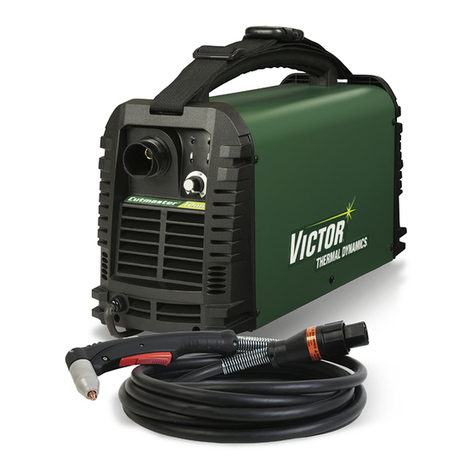
Victor
Victor CUTMASTER Service manual
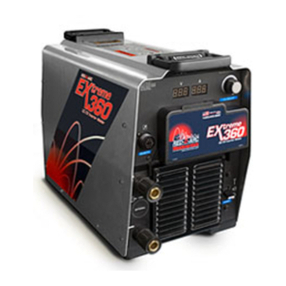
Red-D-Arc
Red-D-Arc EXTREME 360 owner's manual
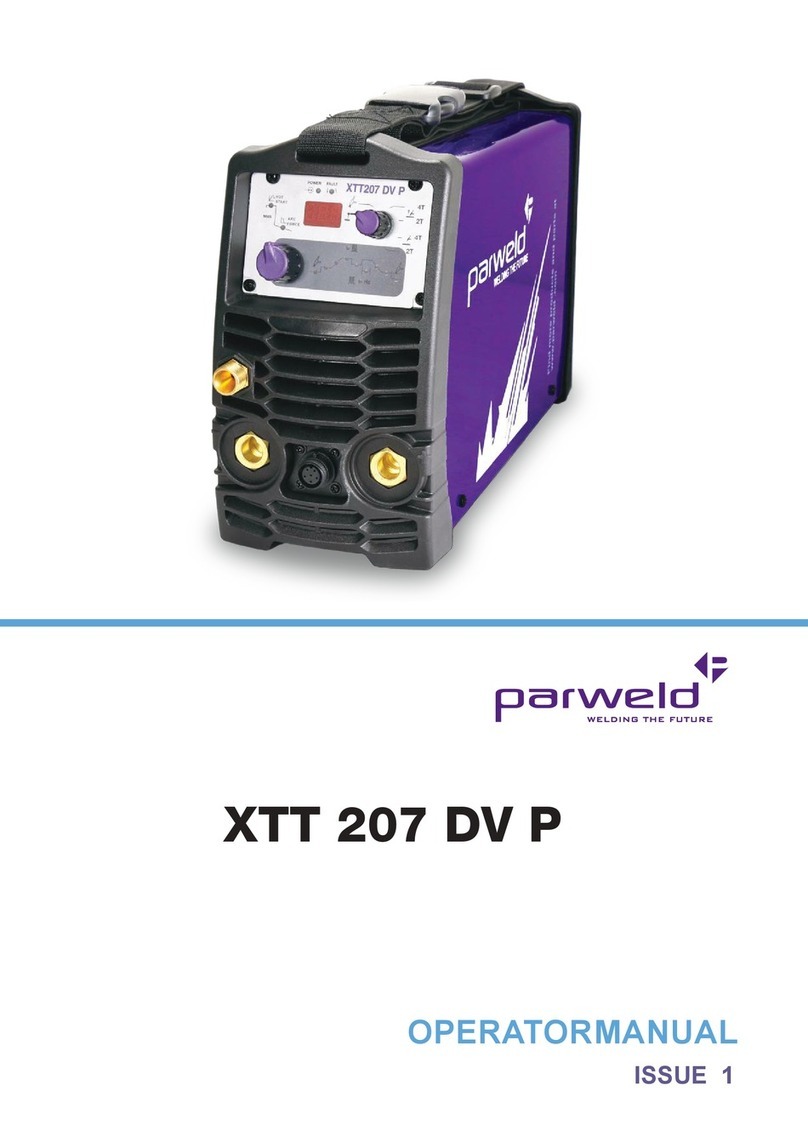
Parweld
Parweld XTT 207 DV P Operator's manual
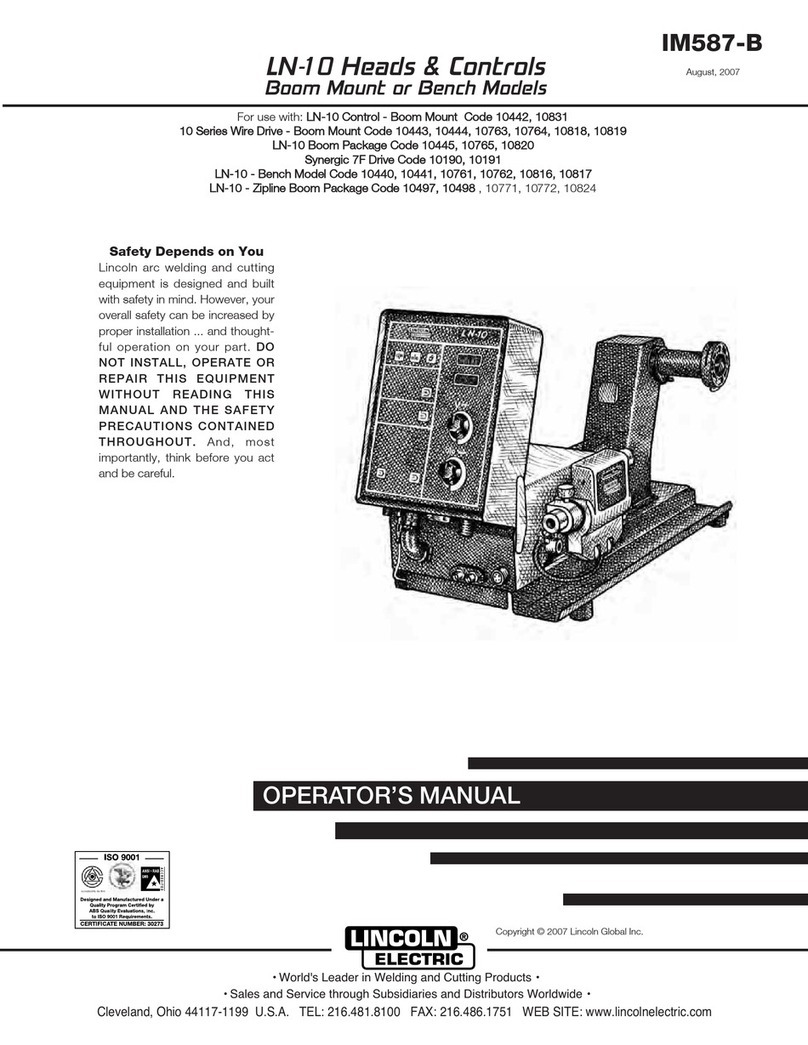
Lincoln Electric
Lincoln Electric LN-10 HEADS & CONTROLS IM587-B Operator's manual
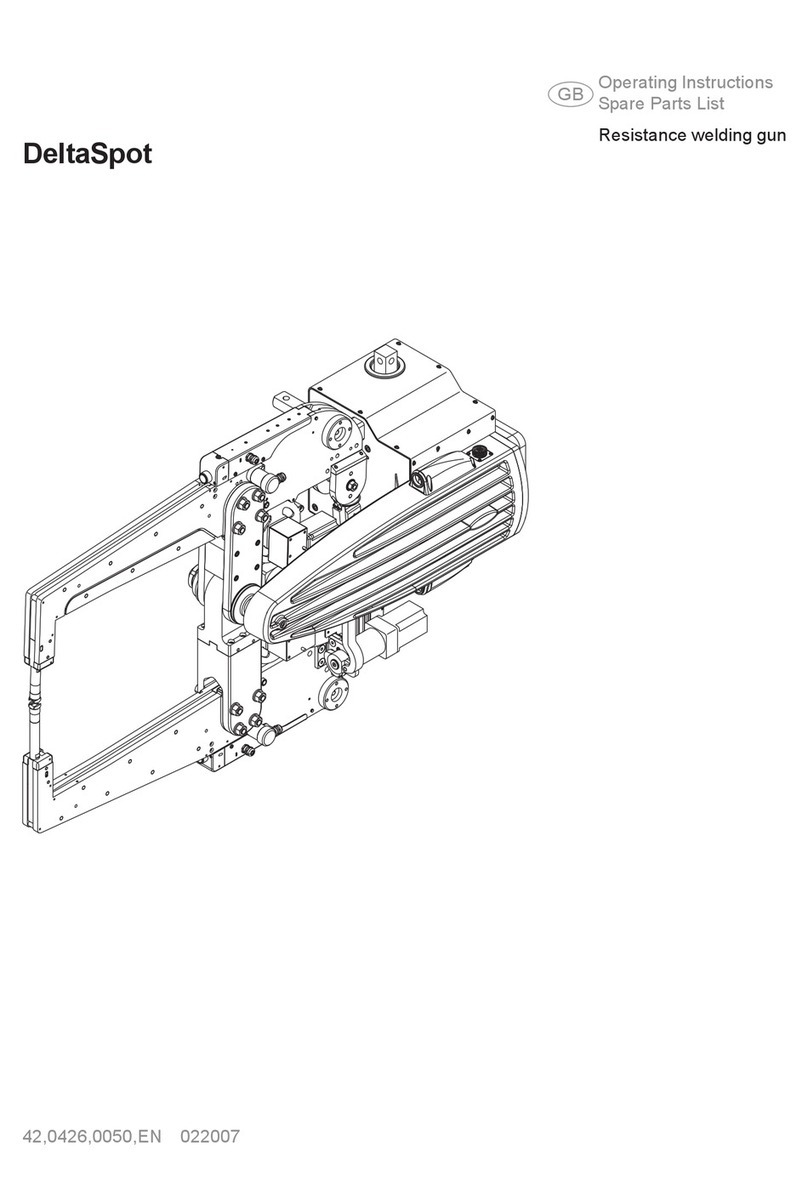
FRONIUS
FRONIUS DeltaSpot Operating instructions/spare parts list

Lincoln Electric
Lincoln Electric Vantage 580 11657 Operator's manual
